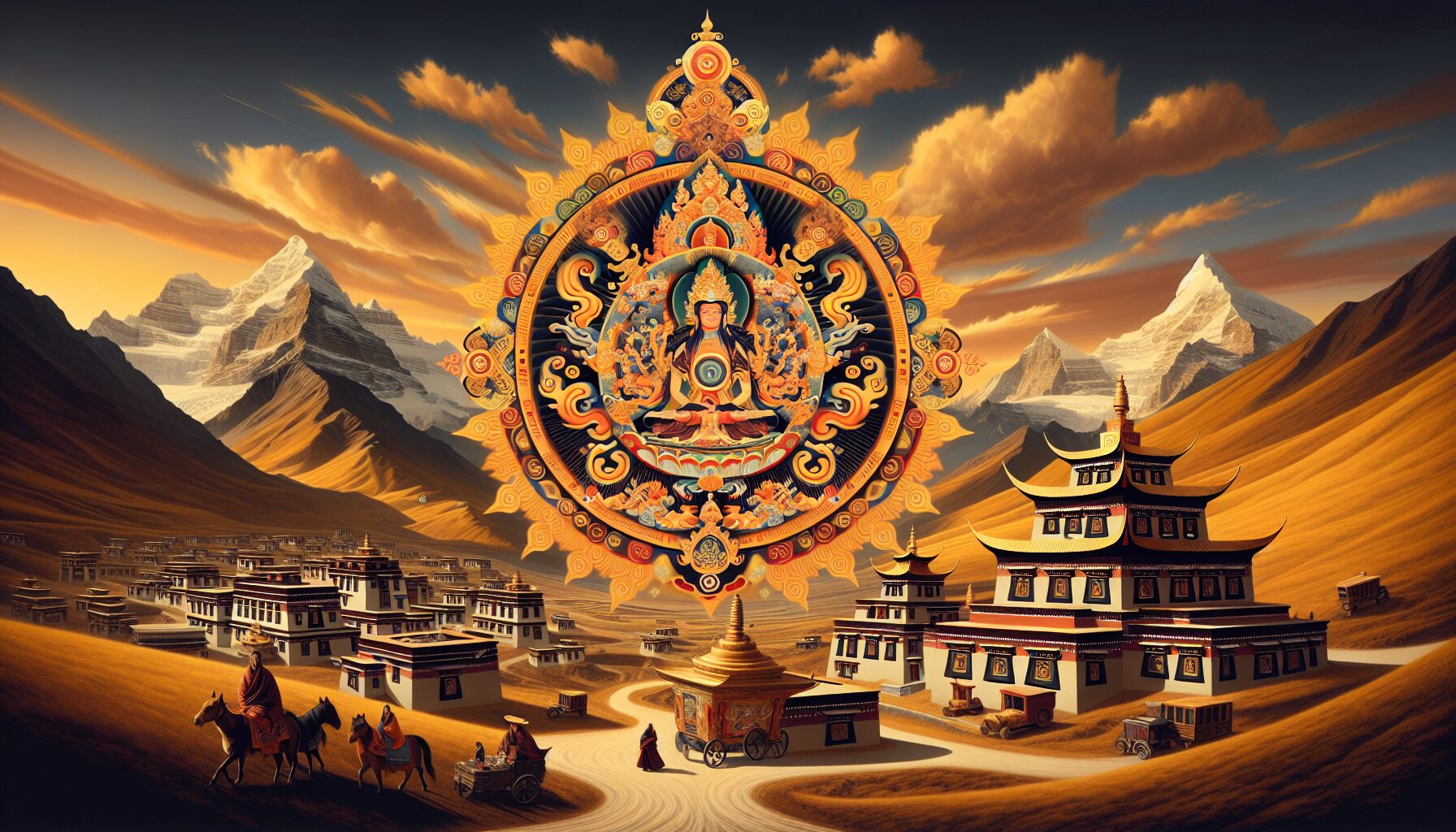The concept of Bardo is an integral part of Tibetan Buddhism and offers a unique perspective on death and the transition to rebirth. The word “Bardo” translates to “intermediate state” and refers to the transitional phases experienced between death and the next life. Within Tibetan Buddhist teachings, these states are pivotal in determining the fate of the soul and offer opportunities for spiritual awakening and growth.
The Origins of Bardo
The concept of Bardo is primarily derived from the Tibetan Book of the Dead, or Bardo Thodol, which is a revered text in Tibetan Buddhism. According to Robert A.F. Thurman, a professor of Buddhist Studies at Columbia University, the Tibetan Book of the Dead is “a manual of the transcendence through the different stages that the spirit goes through after death” (Encyclopedia Britannica).
The text is believed to have been composed in the 8th century by Padmasambhava, an influential figure in bringing Buddhism to Tibet. It has since served as a spiritual guide for those navigating the journey from death to rebirth, offering insights into how individuals can achieve liberation from the cycle of birth and death, known as Samsara.
The Six Bardo States
- Chikhai Bardo: This state occurs at the moment of death. It is characterized by the dissolution of the body’s elements and the release of consciousness from its physical vessel. During this phase, individuals experience the “clear light of reality,” which provides an initial opportunity for liberation if recognized and embraced.
- Chonyid Bardo: Following the moment of death, this state encompasses the experiences of visions and hallucinatory phenomena. It is characterized by encounters with various peaceful and wrathful deities. Recognizing these visions as projections of one’s own mind can lead to enlightenment.
- Sidpa Bardo: This state involves the process leading to rebirth. During Sidpa Bardo, individuals confront their karmic imprints, which influence their next incarnation. Recognizing the nature of these imprints offers opportunities to influence a positive rebirth.
- Meditative Bardo: This state occurs during deep meditation in the current life. It offers a glimpse into the nature of Bardo experiences, emphasizing the importance of meditation in preparing for the death and rebirth cycles.
- Dream Bardo: The state experienced during dreams, where practitioners develop the ability to recognize and use dreams as opportunities for spiritual practice.
- Living Bardo (or Kyeney Bardo): The present moment of life, viewed as a transitional state conducive to spiritual growth and preparation for death.
The Role of Bardo in Spiritual Practice
For practitioners of Tibetan Buddhism, understanding and practicing the teachings related to the Bardo states are essential for spiritual development. By meditating on the Bardo states, practitioners cultivate mindfulness and a deeper awareness of life’s transient nature.
“The bardo teachings offer a clear view of the ultimate nature of mind, which is the basis of both samsara and nirvana. Through the teachings, one can gain freedom from delusion and attain wisdom” — Sogyal Rinpoche, author of The Tibetan Book of Living and Dying.
This awareness, combined with proper guidance and practice, can lead individuals to recognize the true nature of consciousness and attain liberation.
Contemporary Perspectives on Bardo
While Bardo teachings are deeply rooted in Tibetan Buddhism, their concepts have also attracted the interest of Western thinkers and psychologists. The parallels drawn between Bardo experiences and psychological models of transformation and transition have led to a broader understanding and appreciation of these ancient teachings.
Notably, Swiss psychologist Carl Jung referenced Bardo teachings, noting the parallels between Tibetan Buddhist concepts and Western psychological thought. Jung writes that the Bardo Thodol presents a “way of liberation” that involves confronting “the archetypal figures which personify the spirits of the dead” (International Journal of Jungian Studies).
Furthermore, researchers in the fields of thanatology and consciousness studies explore Bardo states as valuable models for understanding death, dying, and the transformative potential inherent in these experiences.
The Relevance of Bardo in Today’s World
In the contemporary world, Bardo teachings address universal themes of mortality and transformation. By offering a structured framework for understanding the processes of death and rebirth, these teachings encourage individuals to live with greater intentionality and compassion. The philosophical underpinnings of Bardo challenge practitioners to cultivate a deeper sense of presence and adaptability—a message particularly relevant in times of social upheaval and change.
Through meditative practices and contemplation on the Bardo states, both Buddhists and those from different spiritual backgrounds can gain insights into the essence of consciousness and the interconnectedness of all life. Recognizing the transient nature of our current existence fosters qualities of mindfulness, empathy, and a commitment to live life ethically, honoring the interconnected web of all beings.
Conclusion
The teachings on Bardo states offer profound wisdom about the nature of existence, emphasizing transformation through awareness and spiritual practice. By exploring these intermediate states, practitioners are encouraged to live authentically, embrace impermanence, and ultimately seek liberation from the cycle of samsara. In doing so, they not only prepare for their journeys beyond this life but also enrich their current life’s purpose and meaning.
Whether one approaches Bardo from a traditional Buddhist perspective or as a universal symbol of growth and transformation, its teachings continue to illuminate the path toward awareness and liberation, guiding individuals through the mysterious terrain that bridges life, death, and rebirth.
